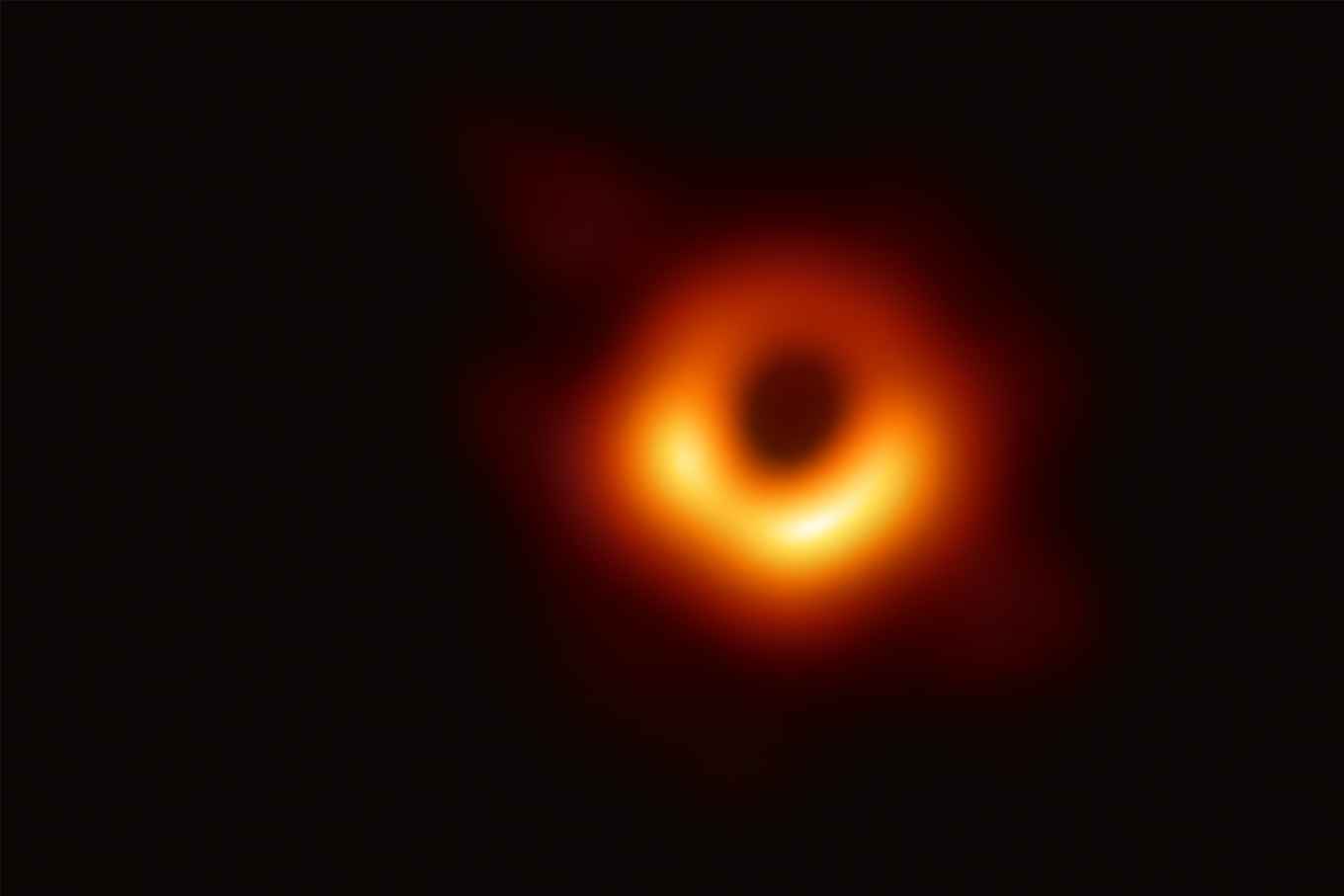Shadow of black hole M87* is wobbling
24 September 2020

The EHT (Event Horizon Telescope) is an array of telescopes that uses the very-long-baseline interferometry (VLBI) technique to form a virtual radio telescope with a dish diameter the size of the Earth. Between 2009 and 2013, M87* (the supermassive black hole at the centre of the M87 galaxy) was observed using prototype EHT arrays; from three locations in 2009-2012 and four in 2013. The full EHT array became operational in 2017, at which time it consisted of seven telescopes at five locations around the globe.
Statistical models
Although the observations dating from 2009-2013 contain much fewer data than those from 2017, which impeded the creation of images at the time, the EHT team was able to use statistical models to find changes in the appearance of M87* between 2009 and 2017.
They concluded that the diameter of the shadow of the black hole remains consistent with the predictions for black holes of 6.5 billion solar masses based on Einstein’s general theory of relativity. However, they also made an unexpected discovery: the crescent-shaped ring of hot plasma around M87* wiggles. As such, the astronomers have caught the first glimpse of a dynamic accretion structure this close to the event horizon of a black hole, where gravity is extremely high.
Changes in radiation
Team member Sara Issaoun or the Radboud University explains: 'We applied the knowledge we gained during the previous observations of M87* in 2017 on older data. We discovered that the size of the ring remained unchanged, but the radiation of the gas around it changes over the years.'
To this, Sera Markoff (UvA) adds: 'The brightness of a given point in the ring depends on the properties of the gas around the black hole as well as on its ‘spin’ and their relative orientations. We have already been able to constrain several theoretical models of accretion, which allows us to better test the laws of gravity around black holes.'
Additional telescopes
The EHT astronomers now dispose of a wealth of data on the dynamics of black holes. The team is currently analysing the data from 2018 that involved an additional telescope in Greenland. The array will be further expanded with two additional telescopes in 2021.
Publication details
Maciek Wielgus et al, Monitoring the Morphology of M87* in 2009–2017 with the Event Horizon Telescope, in: Astropysical Journal, 23 Sept. 2020, DOI: 10.3847/1538-4357/abac0d